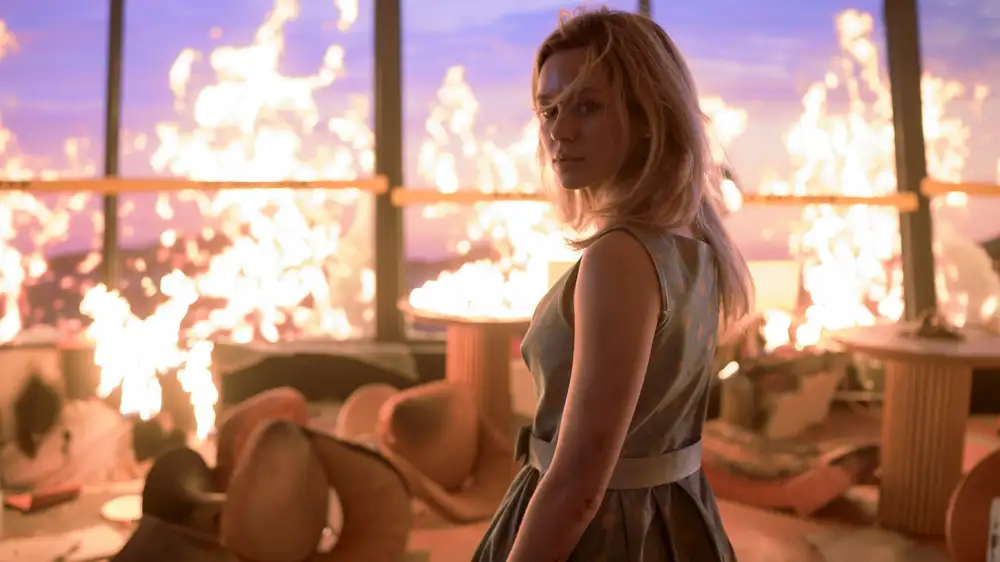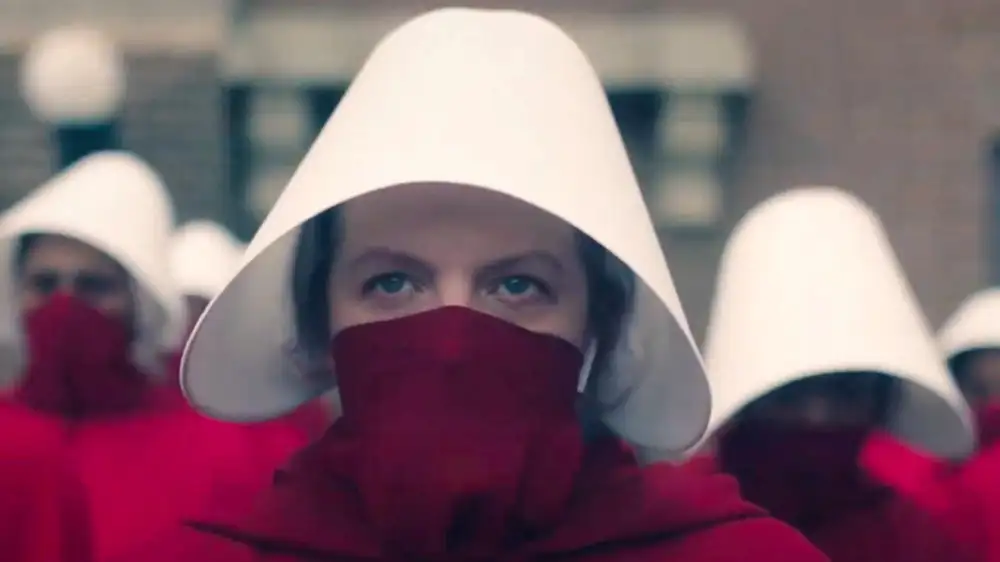We’re so back. Final Destination: Bloodlines is a strong addition to the franchise (there are grossout kills, aplenty). But what sets it apart is the film’s self-awareness and its elaboration on the death curse, giving us more answers than we’ve ever had before.
Final Destination is a horror franchise no one expected to have such staying power. But thanks to creative (and grisly) deaths and the faceless killer concept, the series has carved out its own bloody path in horror history.
The first three movies are undeniable classics. Silly? Sure. Fun? Absolutely. Plus, it left an entire generation terrified of tanning beds and log trucks. But by the time The Final Destination and Final Destination 5 rolled around, the formula felt stale, relying far too much on 3D gimmicks and CG-heavy deaths.
Enter Final Destination: Bloodlines. After more than a decade in the grave, the franchise returns with a gruesome, self-aware revival that knows exactly what it is – and doesn’t pretend to be anything more.
What is Final Destination: Bloodlines about?
Directed by Freaks duo Zach Lipovsky and Adam Stein – and written by Scream 6’s Guy Busick and Cellar Door’s Lori Evans Taylor – Bloodlines focuses on Stefani (Kaitlyn Santa Juana), a college student plagued by a recurring nightmare involving a 1960s sky-high restaurant disaster.
When she digs into her family’s history, she discovers a chilling connection to the survivors of a near-death event that should have never been avoided. Without spoiling anything, the new movie ties directly into the franchise’s mythology in a way that finally explains the origins of the death vision curse – and yes, it actually makes sense.
There’s a great sense of payoff here for long-time fans, giving weight to past entries and making Bloodlines feel like a worthy follow-up rather than a simple cash grab.
Ultimately, it does what every good legacy sequel should: honor what came before, refine the formula, and answer some long-asked questions without overexplaining the mystery.
The kills are back and they’re nastier than ever
Let’s be honest: people don’t go to Final Destination for deep character development or biting social commentary. They come for the kills, and Bloodlines delivers them in spades.
From eye-watering piercing mishaps to a grim Gerald’s Game-esque callback, this is some of the most creative and stomach-turning carnage the series has ever produced – including the opening vision (which we won’t spoil here).
Bloodlines continues to follow in its predecessors’ footsteps by taking its time winding up each death, making you second-guess every falling object, gust of wind, and empty beer bottle. That Rube Goldberg-style chain of events remains the franchise’s greatest strength, and this entry embraces it fully.
Its greatest weakness is, unsurprisingly, the heavy use of CGI. With indie horror hits like Terrifier and In a Violent Nature sparking renewed love for practical effects, some may grow weary of the digital, physics-defying sequences.
But let’s be real – with catastrophes this elaborate, it’d be near impossible to pull them all off without CGI assistance. As is the case with all Final Destination movies, it’s best to embrace the absurdity if you want to have a fun time.
A familiar style
Visually, Bloodlines is clean and contemporary, but very much in line with the franchise’s signature style. There’s no shaky-cam horror here – just crisp, focused direction.
Lipovsky and Stein know how to bring dread, varying between overhead death’s-eye-view shots and close-ups that tease the horror that’s about to ensue.
Tonally, there’s a strong balance between the dark and light. Some of you may wish for a more sinister tone, but Final Destination has never been a gloomy franchise.
Busick and Taylor demonstrate their awareness of this through the script, which packs plenty of tongue-in-cheek humor between the more serious moments. This does mean some of the deeper themes fall flat, especially when there are so many new characters.
Various family dynamics and the topic of grief are given time to play out, but they never quite hit the emotional impact they may be aiming for. Still, the film’s heart is clearly in the right place.
Tony Todd shines one last time
The performances are solid and consistent. Juana may not be the most memorable protagonist the franchise has seen, but she does well for a relative newcomer. The supporting cast similarly play their roles straight enough for the horror to land.
One exception is Richard Harmon, who steals every scene he’s in as Erik Campbell, one of Stefani’s cousins. Charismatic, sharp-tongued, and always a little too calm under pressure, he’s easily one of the film’s most watchable characters.
Then there’s Tony Todd. Returning once more as the enigmatic William Bludworth (in his final role before his real-life death in 2024), his presence is a genuine highlight.
Without giving too much away, Bloodlines offers a fitting send-off for the franchise’s most iconic character, tying into the lore of Final Destination’s origins. Seeing him is a gut punch in the best possible way.
Not perfect but a damn good time
While the backstory makes Bloodlines a welcome extension, there are still plenty of questions left unanswered should a Final Destination 7 get the green light.
Among the downsides, seasoned horror fans will likely see some of the twists coming from a mile away. The new movie also leans pretty heavily on fan service, meaning its ties to the past may not land in the same way for newcomers.
However, there’s more than enough here to keep you entertained. And yes, it’ll leave you terrified of everyday situations once more… you didn’t have any BBQs planned this summer, right?
Verdict
Final Destination: Bloodlines is the best the franchise has been in almost 20 years. Creative kills, smart callbacks, and a surprisingly poignant farewell to an iconic character make this a worthy revival. It doesn’t reinvent the franchise, it sharpens it. And honestly? That’s exactly what we needed.

 “She locks herself in the office”: Couple says Texas Roadhouse server changed their tip to $100. Then they try to confront the manager
“She locks herself in the office”: Couple says Texas Roadhouse server changed their tip to $100. Then they try to confront the manager